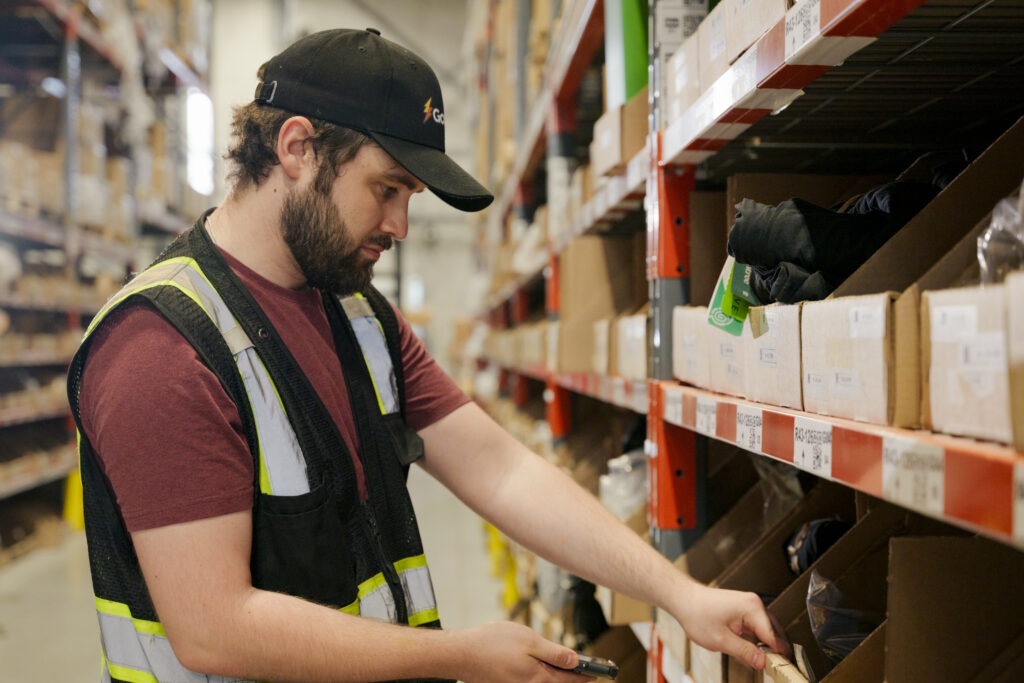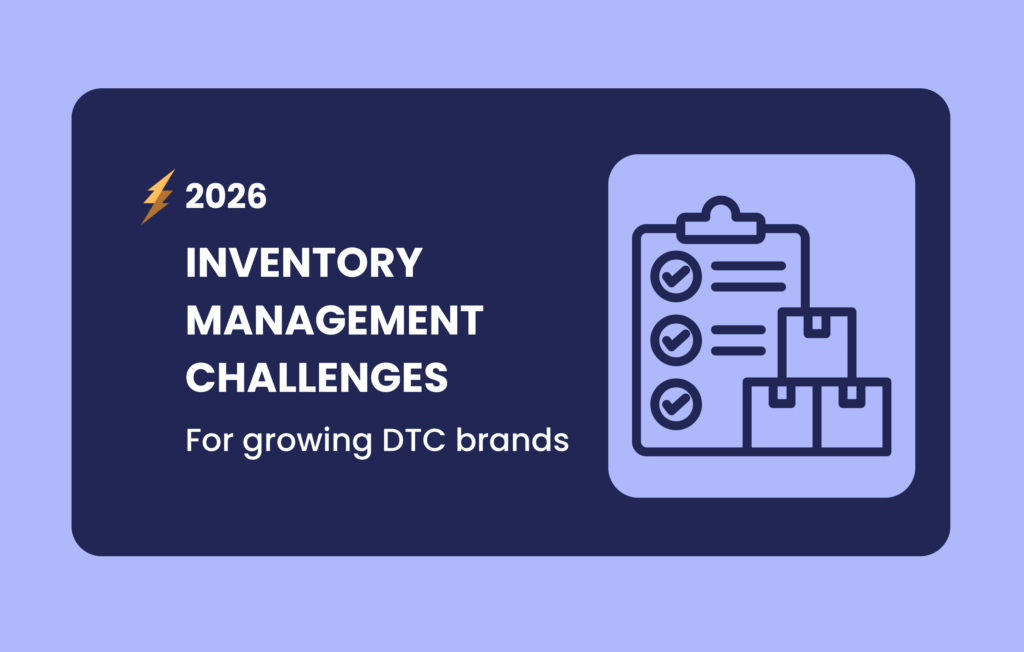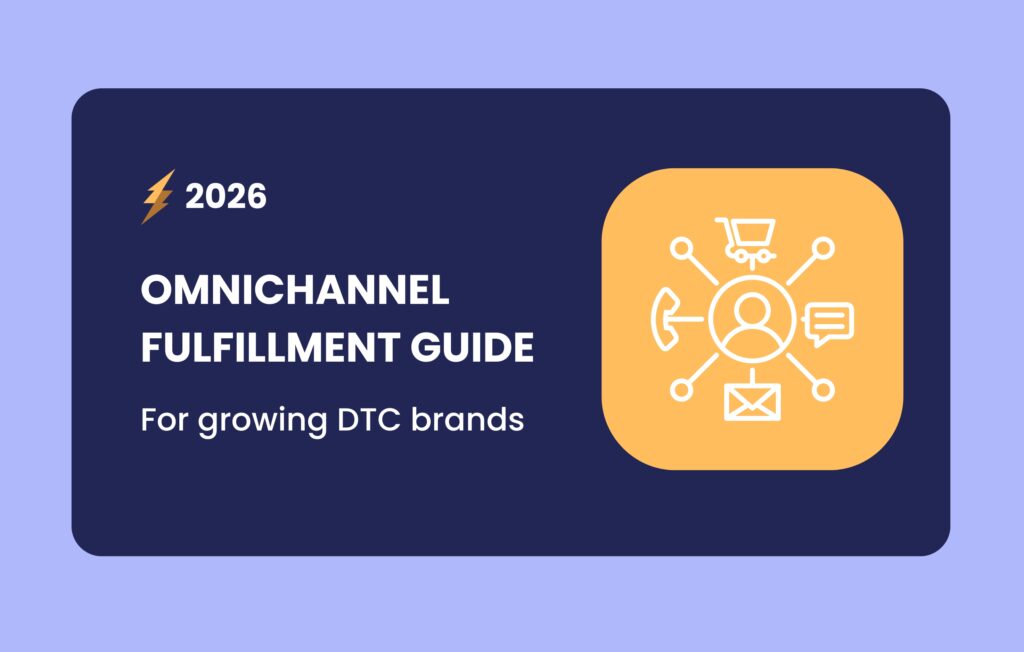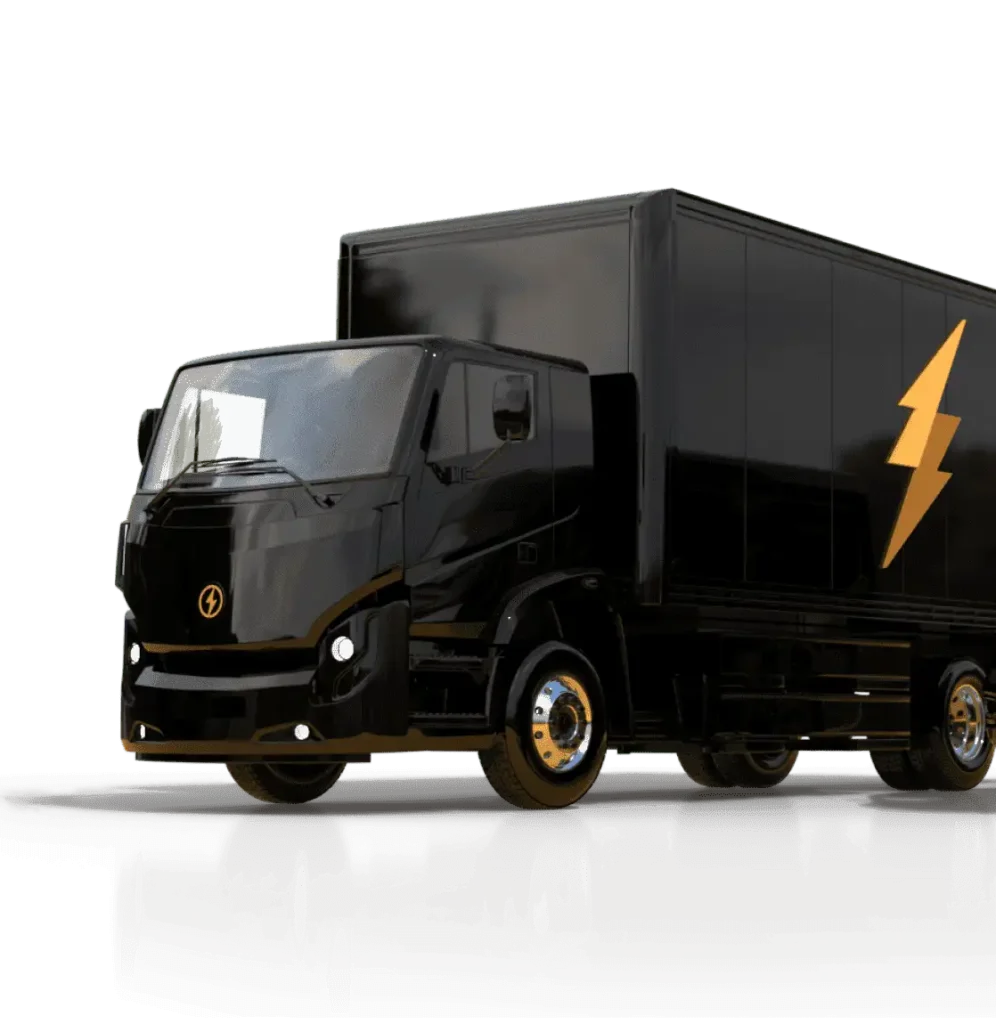Retail fulfillment can be overwhelming — juggling inventory, meeting delivery deadlines, and more. It might even make you want to give up.
But here’s the kicker: skipping out on retail could mean missing 73% of your potential sales.
Just look at Nike — only 27% of their revenue will come from DTC (or Direct-to-Consumer) ecommerce sales this year. Many brands are also expanding into big box retailers, further increasing their credibility and market reach.
Don’t leave that massive chunk of sales on the table!
We’re here to make the entire retail fulfillment process much less daunting – even simple! The recent surge in online shopping has significantly influenced fulfillment strategies, pushing brands to adapt quickly to changing consumer behaviors and increased order volumes. Let’s dig in.

Blake Droesch
Analyst, eMarketer
Offering buy online, pickup in-store (BOPIS) and other omnichannel fulfillment options is now essential to meet customer expectations and provide a seamless shopping experience.
What is Retail Fulfillment?
Retail fulfillment is all about getting your products from a warehouse to the shelves of physical stores, or virtually available on their website or online marketplaces. The fulfillment process begins when a customer places an order, marking the start of the journey. It includes managing inventory, packing orders, shipping orders, and handling returns. Managing stock and using technology to manage inventory are crucial for handling fluctuations in order volume. Another model to consider is dropshipping, where retailers sell products they do not stock but are shipped directly from third-party suppliers. Launching a retail business without a dedicated distribution center can simplify logistics and reduce overhead costs.
When DTC and ecommerce brands consider expanding into retail, they need a system that efficiently manages these tasks and ensures products reach retail stores and shoppers smoothly across both physical and digital channels. To support business growth, it is essential to fulfill online orders efficiently. Choosing the right fulfillment options, such as in-house, third party fulfillment, or hybrid models, is important to fulfill orders effectively.
Third-party logistics (3PL) involves outsourcing warehousing and shipping to specialized providers, allowing businesses to leverage expertise and technology to streamline these processes. Third party providers offer comprehensive fulfillment solutions that can include inventory management, order processing, and shipping orders. There are pros and cons to managing your own fulfillment versus outsourcing to a third party provider.
The fulfillment process is the backbone of retail operations, and logistics operations play a key role in ensuring you ship products efficiently to customers.
Understanding the Fulfillment Process
The fulfillment process drives successful retail operations. We’re talking everything from receiving inventory to shipping products out to customers. For both ecommerce businesses and brick and mortar stores, efficient inventory management ensures products are always available to meet consumer demand. Orders get fulfilled accurately and on time. In today’s fast-paced retail industry, we prioritize customer satisfaction while working to slash fulfillment costs.
At the heart of the fulfillment process sits the supply chain—a network that covers sourcing, storing inventory, and delivering products to customers. Retailers manage their supply chains to optimize inventory levels, minimize delays, and respond quickly to changing customer needs. We implement retail fulfillment optimization strategies to streamline supply chains, reduce operational costs, and enhance the overall customer experience.
For ecommerce businesses, the order fulfillment process gets complex. Customers expect fast, reliable shipping and real-time updates on their online orders. Meanwhile, brick and mortar stores balance inventory between physical locations and ecommerce channels. Both in-store shoppers and online customers receive the products they want, when they want them. Many retailers turn to outsourced fulfillment, partnering with third party providers to handle order processing, shipping, and even returns management. This approach reduces operational costs, improves efficiency, and lets businesses focus on core operations.
Choosing the right fulfillment partner is crucial. The best fulfillment services align with your business goals, offer scalable solutions, and provide the technology needed for inventory visibility and accurate fulfillment. A strong fulfillment strategy includes investing in fulfillment centers, leveraging advanced inventory management systems, and optimizing shipping operations to reduce costs and meet customer expectations.
Retailers prepare to accommodate seasonal fluctuations in demand. A flexible fulfillment model—whether through third party providers, additional storage capacity, or dynamic pricing—ensures you scale up or down as needed. We keep customers happy year-round. Accurate fulfillment, reliable shipping, and efficient returns management build brand loyalty and maintain a competitive edge.
The goal of the fulfillment process? Deliver products quickly, efficiently, and cost-effectively—whether through ecommerce channels, physical stores, or both. We prioritize customer satisfaction, reduce fulfillment costs, and invest in innovative fulfillment solutions. Retailers drive long-term growth and success in the ever-evolving retail industry.
Why DTC and Ecommerce Brands Need to Expand into Retail

Expanding into retail allows DTC and ecommerce brands to tap into a broader shopper base, increasing visibility and sales. Retail stores provide a physical presence where shoppers can experience products firsthand, which can lead to higher conversion rates. Additionally, presence on a retailer’s website can help you capture different market segments.
Let’s go back to the Nike example. Over the last couple of years Nike began moving away from its retail partnerships to focus on DTC. In a recent interview with Sara Eisen of CNBC, Nike’s CEO John Donahoe acknowledged that switching its focus to DTC was a mistake.

John Donahoe
CEO, Nike
Expanding into retail doesn’t mean abandoning the DTC model; it’s about finding a balance. By leveraging multiple channels, brands can maximize their reach, enhance customer experiences, and drive sustained growth. Integrating various sales channels is crucial for ensuring efficiency and visibility across platforms, supporting business growth and operational effectiveness. Hybrid fulfillment solutions, which combine in-house and outsourced models, can help businesses balance control and scalability effectively. While larger brands often benefit from outsourcing fulfillment, smaller retailers may prefer to keep fulfillment in-house to maintain direct control over the customer experience.
Ultimately, choosing the right fulfillment strategy can provide a competitive advantage by improving delivery times, reducing costs, and enhancing customer satisfaction.
Challenges of Expanding Fulfillment Operations into Retail Fulfillment
1. Managing Inventory Across Multiple Channels
There’s no doubt that expanding into retail introduces complexity in managing inventory. Brands must ensure consistent stock levels across various channels, from online stores to physical retail locations. Most retailers still rely on traditional forecasting methods, which can lead to inaccuracies and challenges in inventory management due to changing market conditions and evolving product mixes. Implementing a Warehouse Management System (WMS) can help automate order processing and track inventory in real-time, reducing errors and improving efficiency.
2. Ensuring Timely and Accurate Deliveries
As brands expand into retail, they may face increased pressure to meet delivery expectations across a broader geographic area. This involves coordinating with multiple carriers, optimizing delivery routes, and managing warehousing efficiently. Delays and inaccuracies can lead to shopper and retailer dissatisfaction and a damaged brand reputation, making effective logistics management essential.
3. Synchronizing Online and Offline Operations
One of the significant challenges in retail expansion is synchronizing online and offline operations. Brands must ensure that ecommerce platforms, physical stores, and warehouse management systems are integrated. This synchronization is critical for providing a unified shopping experience, maintaining accurate inventory records, and streamlining order fulfillment processes. Disjointed systems can result in operational inefficiencies and lost sales opportunities. In fact, 73.5 percent of retailers view integrating various fulfillment processes as very important for business success.
How a 3PL Supports DTC and Ecommerce Retail Fulfillment
Partnering with a 3PL (third-party logistics provider) that specializes in retail fulfillment can help you navigate these challenges effectively. Here’s how a 3PL can streamline your retail fulfillment operations:
Distributed Fulfillment Network = Improved Transit Times & Reduced Fulfillment Costs
A distributed fulfillment network can drastically improve transit times and shipping costs by positioning inventory closer to your top retailer locations end shoppers. A 3PL, like GoBolt, that leverages a network of strategically located fulfillment centers, ensures that products are stored and shipped from locations nearest to your shoppers and retail partners.
Scalable Fulfillment Infrastructure and Retail Fulfillment Optimization Strategies: Adapting to Increasing Volume
As your brand grows, your fulfillment needs are sure to scale. Whether your brand is experiencing seasonal spikes or sustained growth, a 3PL’s flexible solutions ensure that your operations continue to run smoothly without disruptions. This scalability allows brands to meet growing demand without compromising on service quality or delivery times. Increased sales is the goal, and your operations shouldn’t work against you.
Technology: Visibility and Integrations
A 3PL’s technology can offer visibility into your inventory and shipments. At GoBolt, our inventory tracking and reporting allow you to monitor inventory levels, order statuses, and shipment progress. This allows you to keep an eye on stock levels and ensure you don’t stock out.
Additionally, integrations with industry partners like Orderful helps facilitate faster, more efficient, and cost-effective retailer onboarding and order processing, reducing the risk of errors and improving operations.
Experience with Retail Requirements
Navigating the complex requirements of retail partners can be daunting. A 3PL’s expertise in meeting these standards ensures that your products comply with all necessary packing, labeling, and loading procedures. Through partnerships with solutions like RetailReady, a 3PL can help reduce chargebacks, improve retailer relationships, and ensure the quality and compliance of B2B orders. This experience is invaluable when launching and maintaining retailer relationships.
How GoBolt Simplifies Retail Fulfillment for DTC & Ecommerce Brands
GoBolt goes beyond the typical 3PL and offers tailored solutions that make retail fulfillment easier for DTC and ecommerce brands. From advanced technology integrations to sustainable delivery options, here are a few unique ways GoBolt ensures a smooth, efficient, and compliant retail fulfillment process:
1. Sustainable Delivery Options
GoBolt offers sustainable last mile delivery choices allowing brands to align with shopper expectations and reduce their overall environmental impact. Our fleet of electric vehicles, optimized delivery routes, and carbon sequestering initiatives significantly reduce Scope 3 emissions.
2. Returns Processing
Efficient returns processing boosts shopper satisfaction and keeps your operations running smoothly. GoBolt’s returns management service integrates with your existing systems to handle returns quickly and accurately, saving you money and ensuring items are restocked faster.
3. Enhancing Efficiency and Compliance
GoBolt’s integrations with platforms like Orderful and RetailReady simplify complex processes and ensure compliance with retailer requirements.
Orderful Integration: Simplify EDI Processes |
Efficiency: Orderful reduces the complexity of EDI integrations, allowing brands to manage their trading partners and transactions from a single platform. |
Cost Reduction: The centralized EDI solution cuts down expenses associated with traditional EDI systems, such as manual data entry and custom integrations. |
Faster Onboarding: Orderful’s platform enables quick onboarding of new retailers, allowing brands to start selling faster and scale their omnichannel presence. |
Improved Accuracy and Efficiency: Automation of EDI processes reduces errors, leading to more accurate data and better relationships between brands and retailers. |
Expanded Trading Network: Orderful’s pre-connected network of retailers allows brands to expand their reach and engage with a wider range of partners, supporting a true omnichannel strategy. |
RetailReady Integration: Ensure Compliance with Retailer Requirements |
Reduce Chargebacks: Minimize financial penalties by ensuring accurate order processing and compliance with retailer specifications. |
Improve Relationships: Strengthen partnerships with retailers through consistent and reliable fulfillment practices. |
Faster B2B Order Processing: Accelerate the handling of bulk orders, enhancing visibility and data reporting. |
Quality Assurance: RetailReady’s software digitizes routing guides and SOPs, guiding operations through precise packing, labeling, palletization, and loading procedures tailored to each retailer’s specific requirements. This ensures high-quality standards and operational compliance, reducing errors and improving retailer relationships. |
Retail Fulfillment FAQs
Retail fulfillment is the process of getting products from a brand or supplier into retail channels and ultimately into customers’ hands. It includes receiving inventory, storing it, processing orders, packaging, and shipping to retailers or stores. Unlike ecommerce fulfillment, it often involves meeting strict retailer compliance requirements for labeling, routing, and delivery windows.
In retail, fulfillment refers to the end-to-end steps required to deliver merchandise to a store or directly to shoppers. This includes inventory management, order processing, packaging, shipping, and handling returns. Retailers depend on efficient fulfillment to avoid stockouts, reduce costs, and create a smooth shopping experience across both physical and online channels.
A retail fulfillment center is a specialized warehouse designed not just to store goods, but to process and ship them quickly to retail stores or directly to consumers. Unlike traditional storage facilities, fulfillment centers focus on fast order picking, packaging, compliance with retailer requirements, and often returns handling. Their role is to streamline retail supply chains and improve delivery speed.
A warehouse is primarily for storing large volumes of inventory, while a fulfillment center is built for fast order processing and shipping. Warehouses focus on long-term storage, whereas fulfillment centers handle picking, packing, labeling, and delivery to retailers or customers. In retail logistics, fulfillment centers enable faster replenishment and a more agile supply chain.
Strong inventory management ensures products are in the right place at the right time. In retail fulfillment, poor inventory control can cause stockouts, overstocking, and chargebacks from retailers. Accurate forecasting, real-time visibility, and smart distribution across fulfillment centers help brands lower costs, meet retailer demands, and keep customers satisfied.
Reverse logistics refers to handling returns, damaged items, and unsold goods flowing back through the supply chain. In retail fulfillment, reverse logistics is critical for recovering value, reducing waste, and maintaining retailer relationships. Efficient returns management improves customer satisfaction, reduces costs, and supports sustainability by keeping products in circulation longer.
Final Thoughts
Retail fulfillment doesn’t have to be a complex and scary challenge. With the right 3PL partner, like GoBolt, you can simplify your operations, exceed retailer and shopper experiences, optimize your fulfillment strategy across multiple channels, and reach that 73% of sales you’d otherwise be leaving on the table.
Ready to expand into retail fulfillment? Connect with GoBolt today to discover how our solutions can simplify your logistics.







